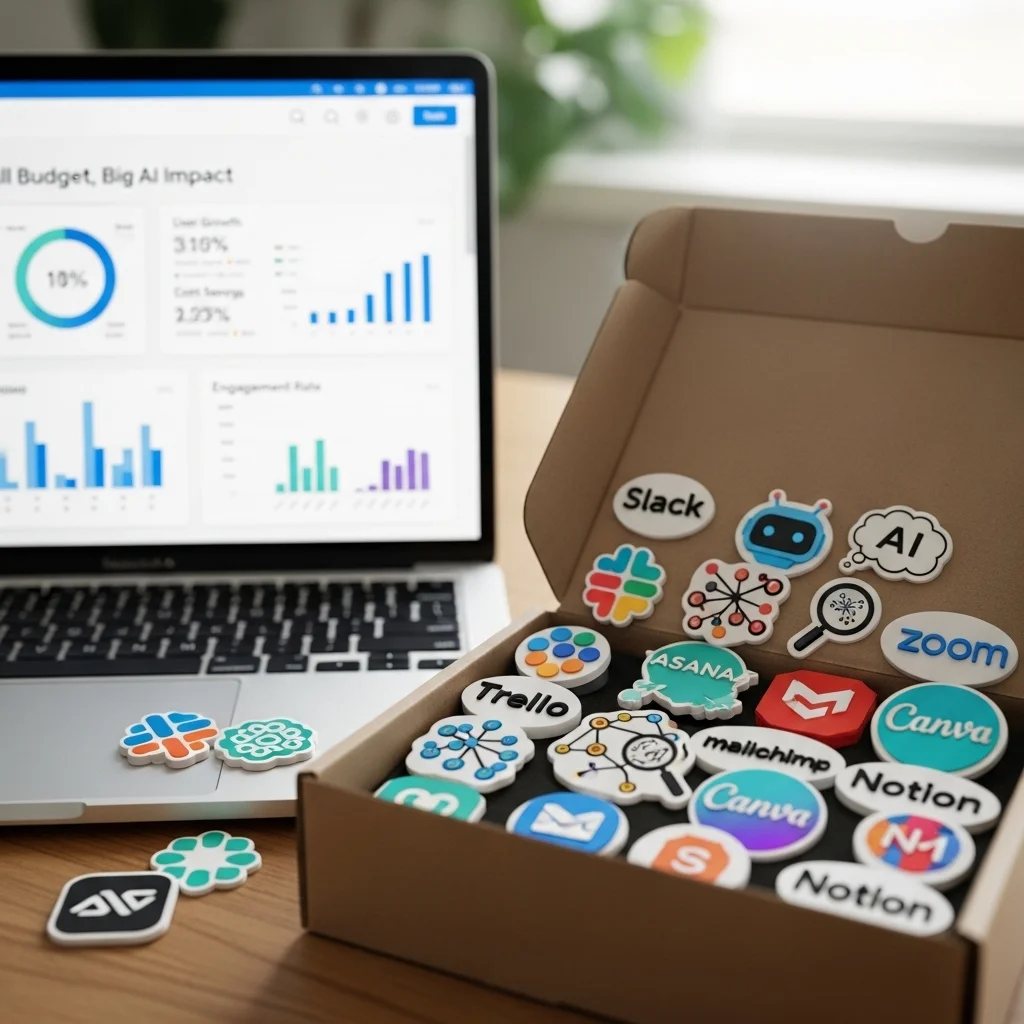Why start now?
AI sets the tone, you decide the tempo
Automate
Streamline repetitive tasks and win back precious time for creative work.
Predict
Leverage historical data to map demand, risks and promising niches with precision.
Personalise
Deliver content and offers that feel hand-crafted for every individual customer.
Iterate
Keep learning — models continuously refine themselves based on new feedback and data.
Data tasting and algorithm seasoning.
Data tasting and algorithm seasoning

Like cooking with flavours
Data is your pantry
Without fresh, clean data you are cooking with spoiled ingredients. Check sources, remove noise and structure everything — a messy cupboard leads to unpredictable flavours.
Model is the recipe
You can serve haute cuisine with a simple recipe if the technique is right. Convolutional, recurrent or transformer? Choose what fits your business question, not what is trending on GitHub.
Humans remain the chefs
AI suggests; you taste. Keep weighing, tweaking, seasoning. In practice the real game-changer is the blend of domain expertise and algorithmic power.
Clean data prevents a nasty aftertaste
Start small, learn fast, scale big
Do not forget governance — compliance is the salt that keeps everything in balance
Roadmap to AI success.
A practical route from idea to impact.

Step 1 — Peel back the problem.
First determine which concrete business friction you want to solve. Think smaller than big: "triage customer questions" instead of "revolutionise customer service".

Step 2 — Draw your data map.
Map sources, ownership and quality. Many people underestimate how much work data cleaning really is.

Step 3 — Build a prototype.
Use open-source libraries or managed platforms to train a minimum viable model. Test it out loud with end users — feedback is gold.
Shadow mode: run your model alongside the current process without direct impact. Measure the difference, fine-tune parameters.

Step 4 — Productise.
Integrate the model with APIs, monitor performance and set up automatic retraining. No more manual tinkering.

Step 5 — Embed the culture.
Make AI literacy part of regular meetings. Technology fails more often on the human side than on the technical side.
A philosophical view of algorithms

Can machines truly understand what we mean?
Our relationship with technology is a hall of mirrors. The smarter the code, the more we wonder what "smart" actually means. You often hear the question: is AI conscious? For clarity: no. A neural network optimises a mathematical function, nothing more. Yet the outcomes can feel as if there is understanding behind them — that is exactly where both confusion and potential lie.
Homo in machina
We love to project humanity onto systems. That can be useful (think conversational agents) but risky when we shift moral responsibility to software.
Limits of interpretation
Algorithmic decisions remain statistical. That means probability distributions, not certainties. Organisations that underestimate this nuance often end up with disappointed stakeholders.
Ethics as a built-in feature
Governance should be designed from day one: fairness checks, explainability, audit trails. Otherwise you will later find yourself in a swamp of legal and reputational damage.
Practical tips for quick wins

Small budget, big impact — start tomorrow
Start with existing SaaS tools that already offer AI functionality (think automatic tagging, anomaly detection)
Use transfer learning: take a pre-trained model and fine-tune it on your domain. Saves weeks of training time and energy consumption.
Set up a data contract between teams. It may sound dull, but agreeing on definitions prevents endless discussions later.
Monitor drift: models age faster than you think. Schedule periodic health checks in your sprint backlog.
Document successes and failures. An internal "AI logbook" accelerates learning and prevents repeating mistakes.
A critical note

When you might want to wait with AI
There are scenarios where the hype is bigger than the value. For example when:
Data is minuscule
A dataset of 300 rows? Then a simple Excel model could make more sense.
Regulation is strict
Financial sector? E-privacy? Sometimes the compliance burden outweighs the benefits.
Legacy refuses to bend
If your core systems date back to 1998, integration can be more expensive than a rewrite. Upgrading infrastructure will solve it eventually, but budget needs to be allocated first.


Brainstorm about smart deployment?
Interested in testing your idea against our practical experience? Send us a message — we are happy to think along about a small-scale experiment that shows value quickly.
What is the difference between machine learning and AI? 🙂
Machine learning is a subset of artificial intelligence where systems learn patterns from data. AI is the broader umbrella that also covers logic, planning and language understanding.
How much data do I need at minimum? 🤔
There is no magic number, but as a rule of thumb: the more complex the problem, the more examples you need. For simple classification a thousand rows might work; for nuance-rich language models you are talking millions.
Can I use AI without a data scientist in-house? 😅
Yes, through low-code platforms and ready-made APIs. But as you go deeper, specialist knowledge becomes indispensable to steer bias and performance.
How do I prevent bias in my model? ⚖️
Start with representative data, use fairness metrics and let diverse teams test. As mentioned earlier, ethics is not an afterthought but a core component.
Is AI expensive to maintain? 💸
Maintenance mainly costs time from people who handle retraining and monitoring. Cloud costs are falling, but do not forget the expertise needed to interpret alerts.
When will I see the first ROI? ⏳
With well-defined use cases a proof of value can provide insight within weeks. Full ROI depends on integration, scale and adoption.
Do I need a GPU cluster? 🚀
Only for heavy deep-learning workloads. Many business models run fine on CPU or shared cloud GPUs.
Will employees be replaced by AI? 😟
Some tasks will, but new roles are emerging: prompt engineer, AI ethicist, model steward. It is about reskilling and task redistribution, not pure substitution.










.webp)
